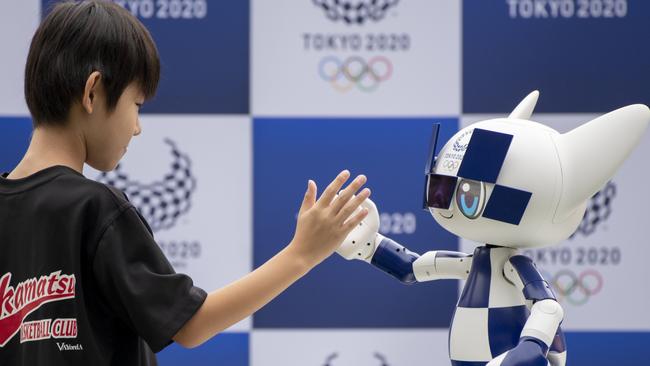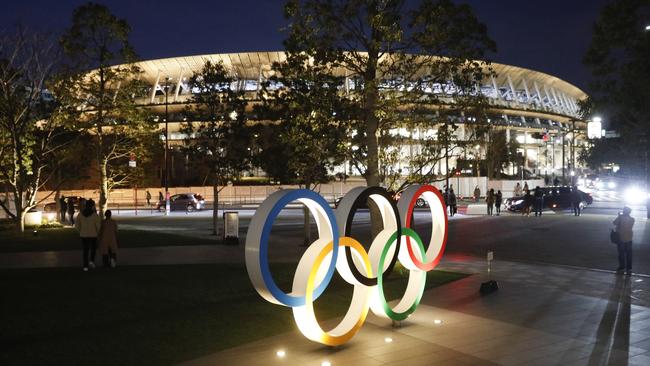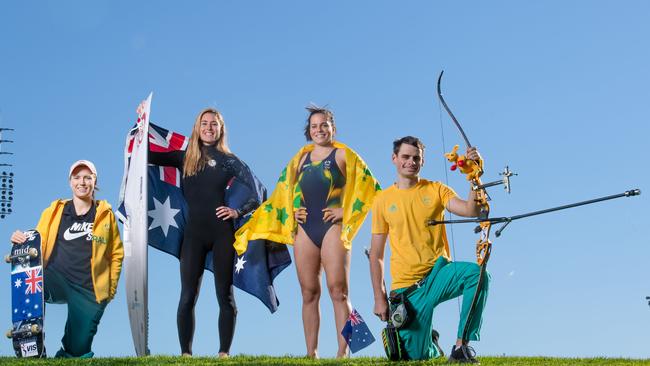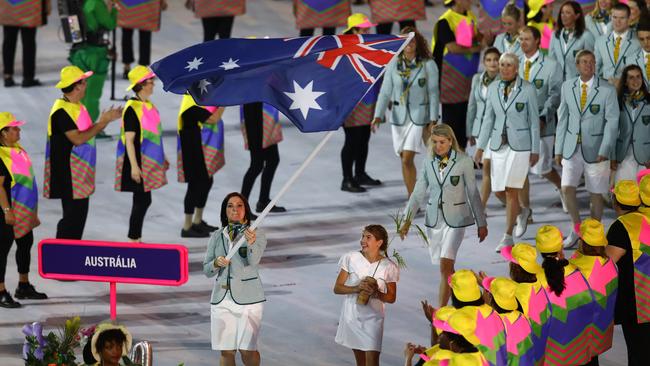No spectators? Robots presenting medals? What will 2021 Tokyo Olympics look like?
The COVID-19 pandemic has changed the world and, with the Tokyo Olympics postponed until 2021, organisers must adapt. From what makes sense to the most radical here’s what the event might look like.
Olympics
Don't miss out on the headlines from Olympics. Followed categories will be added to My News.
Empty spectator stands, Japanese robots presenting medals and athletes being sent straight home as soon as their events finish to watch the Closing Ceremony on television instead of marching in the stadium.
They’re among the most radical ideas that have been floated to ensure the postponed Tokyo Olympics go ahead in 2021, but athletes should not be alarmed. If anything, that’s the best news they’ve been told in months.
Kayo is your ticket to the best sport streaming Live & On-Demand. New to Kayo? Get your 14-day free trial & start streaming instantly >

Those proposals are listed only as “worst-case” scenarios because the overriding message from the International Olympic Committee is clear: everything that can be done, will be done, so that Tokyo 2.0 proceeds.
“This Olympic Games Tokyo 2020 in 21 can, should and will be the light at the end of the tunnel that all humankind is in at this moment,” the IOC President Thomas Bach said.
“At the end of this very difficult period for humankind, the Olympic Games can be a great symbol of hope, of optimism, of solidarity and in unity in all our diversity.“
Exactly how the Games will look in 2021 still hasn’t been finalised because it depends on how the world is coping with the global pandemic in a year’s time.
The IOC is secretly preparing for multiple scenarios and has more than 200 different proposed changes but the one certainty is that this will be an Olympic Games like no other.

EVENTS AND VENUES
All the venues that were locked in for 2020 will remain the same for 2021, although there is a strong possibility that the course for the open water swimming will be moved because the tides in Tokyo Bay in 2021 will be different from 2020.
The competition schedule is unchanged, apart from some minor tweaks to the starting times to fit in with broadcasters. Prompted by a request from Australia, the IOC has also agreed to lift the age limit for men’s football from 23 to 24 so that every player who helped their team qualify can still participate.
NUMBER OF ATHLETES
There will be no reductions in the number of athletes competing. Australia expects to send a team of around 480 athletes. Already, 339 spots are guaranteed with 74 individual athletes confirmed in their teams. There are still some potential problems for qualifying competitions that are yet to take place if international borders remain closed but they will be decided sport by sport but won’t overall affect numbers.
MORE OLYMPICS
Olympic Opening ceremonies: the good, bad and downright bizarre
What our Olympic athletes are doing to stay motivated for the postponed Tokyo games

ATHLETE PREPARATION
Australian athletes are way ahead of most other countries in being able to prepare for the Games but the biggest concern remains the limited opportunities to compete against international opponents in the lead-up. The Australian government is looking at ways to allow foreign athletes to come here if our own Olympians can’t travel to warm-up events.
FUNDING
Unsurprisingly, the operating budget for the Games has blown out by billions so Japanese organisers are trimming off all the unnecessary fat. There will be no cuts to athletes and their programs with the Australian government already committing to provide full funding for the extra year. However, international sports federations have been told the gravy train has come to a stop so they will have to reduce their number of delegates and freeloading entourages.
QUARANTINE
Japanese immigration will allow all Olympic participants, including athletes, coaches, officials and media, into the country without having to serve quarantine in Japan. But it is expected that athletes will have to enter quarantine bubbles in their own countries before travelling to Japan with North Queensland the most likely site for Australia’s competitors. It is unknown if foreign visitors who are not credentialed for the Games will be allowed into Japan, so the families and friends of athletes may have to watch from home.
SPECTATORS
This is the biggest question that no-one can give an answer to just yet. If things stay as they are, there’s every chance the number of spectators will be reduced or the stands left empty but Japanese organisers remain hopeful that won’t happen. “We shouldn‘t make spectators go through hard times. Sporting events are all about the whole country empathising,” said Tokyo Olympic organising committee President Yoshiro Mori.

CEREMONIES
For the first time, each country will have two flag bearers, one male and one female, but the number of participants at the opening and closing ceremonies could be reduced. Organisers are adamant they will not prevent athletes from marching if they want to but it’s possible athletes could have to leave Japan once their events are over which will limit participants for the finale. The protocols for medal ceremonies could also change if competitors have to social distance and not hug each other.
MISSING IN ACTION
One country that could benefit the most from the 12-month delay is Russia – if it wins its appeal against widespread doping. Currently banned from competing in international events for four years, the verdict of Russia’s appeal to the Court of Arbitration for Sport will be decided before July 2021.
